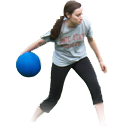
The Running Injury More Women Get Than Men

Not only can we identify the most frequent running injuries, we also know which running injuries are more prevalent depending on a runner’s gender, including in the most frequent running injury site: the knee. While we now have this answer, there is actually still plenty we don’t know about it, like why it happens. Luckily, we do have ways to prevent knee injuries, however, the research still puts the power in your hand to protect yourself from the most common running injury.
WHAT WE KNOW
A recent review looked at 36 peer-reviewed studies that took place in 2017 or earlier, all to identify the rate of lower limb running injuries (and divide them by gender). Published in the Journal of Sports Science & Medicine (JSSM), it confirmed the majority of running injuries happen at or below the knee, while women have a higher proportion of knee injuries than men.
There are studies that have been performed to look specifically at overuse injuries that also found women sustained injuries at a higher rate than men. Physical therapist Lindsey Plass, DPT, points to a specific article, which discusses the fact knee stiffness appears to be the lone predictor of knee injury.
“I would say the most common reason all genders suffer running-related injuries is running too much, too soon,” Plass explains. “The capacity of their tissues is unable to withstand the loads being placed upon them during their training.”
Plass’ use of ‘all genders’ is key here. While the data supports the fact women get more knee injuries than men, there is no specific discussion as to why. The review in JSSM theorizes the “difference may be due to structural differences between males and females or functional differences in running biomechanics.” The authors acknowledge there is documentation to suggest women who play soccer (referred to as ‘football’ in the study) and basketball have more traumatic knee injuries than men due to greater Q-angle and a greater reliance on quadriceps muscle activity; the conclusion has not been made in terms of running.
WHAT WE DON’T KNOW
We know more women experience knee injuries in running than men but we don’t know exactly why. Even though we can’t pinpoint the exact reason, Alice Holland, DPT and director of Stride Strong Physical Therapy, shares several researchers’ theories as to why, (while emphasizing the conclusions of their studies differ and are not 100% well-substantiated). In fact, two of the theories point to research cited in the JSSM review.
“[The first theory is due to] women having a larger Q-angle, which is an angle made from the ASIS (hip bone) to the knee,” explains Holland. “This angle may affect the resultant line of force of the quadriceps, which would affect the vector of forces acting on the patella. However, this theory was debunked by several research articles in the past and the Q-angle is not really a conclusive measurement made in the clinic anymore.”
Another theory Holland references is that of the reliance on quadriceps muscle activity, which she — again, like the JSSM review — notes was shown in several studies about basketball and soccer. Because of this, women tend to have straighter postures when landing; however, the focus of these studies was side-step cutting (or stepping one leg out to the side and then bringing it back to neutral) versus the forward propulsion of running.
Finally, Holland discusses the idea that, in the past, women were less likely to do strength training than men (which applies to the JSSM review as they looked at studies prior to 2017).
“[There was a] notion that women didn’t want to ‘bulk up’ from weightlifting,” she notes. “This would affect one genders preference toward muscle building and therefore bias that group to have a lower incidence of patellofemoral pain.”
Luckily, for this last point we are seeing a cultural shift as we learn strength training can be done to create long and lean muscle (Think: The rise in barre classes). And strength training, as it turns out, is going to be the best way for women to prevent knee injury.
WHAT TO DO ABOUT IT
Ready to prevent knee injury? It’s time to add a well-rounded strength-training routine to complement your running. AJ Cohen, DPT, founder of Up and Running Physical Therapy, notes it is often a myth that footwear and lack of stretching or foam rolling contributes largely to injuries. Instead, it is a lack of strength training, which Cohen agrees has been misunderstood over the years.
“Not many runners are doing heavy strength training because of misinformation in the running community,” adds Cohen. “Heavy strength training is the next best thing any runner, obviously including women, can do to increase tissue tolerance and resilience to running.”
When building in a plan to add to your running routine, Holland shares that you should be doing strength work (“to build muscle control and muscle strength”) along with plyometric, ballistic training (“to bridge the gap between strength and power”). All runners can benefit from hip and glute strengthening, quad strengthening and resistance training for the core. Holland also calls out doing ballistic jumping, hopping, single-leg hops and jumps into steps — while paying attention to biomechanics — to help boost power
The Arena District Athletic Club is more than just a gym, it’s a premier fitness facility located in the heart of the Arena District in downtown Columbus. We provide convenience and quality, featuring top-of-the-line equipment, top-notch personal trainers, spa-like locker rooms and a wide variety of free group fitness classes daily including Cardio, Spinning, Barre Fusion, Yoga, Boot Camp and more. We offer free 2-hour parking and convenient contract-free memberships, to fit your healthy lifestyle needs. Don’t just join, belong.




